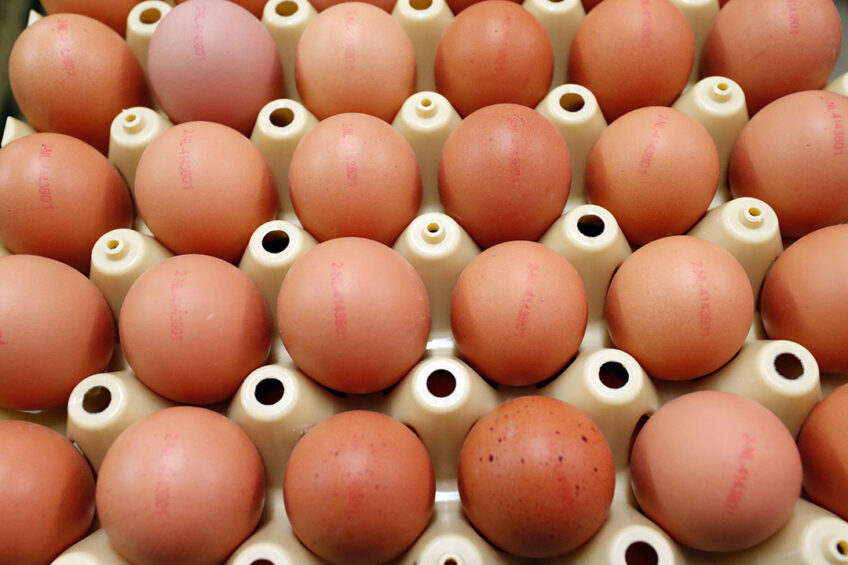Unlocking the value of sustainable business practices

Egg producers need more sustainability guidance to measure and track their carbon footprint on their own farm.
David Nickell, vice-president business solutions at DSM Animal Nutrition and Health, said the worldwide drive for sustainable animal protein demanded a much more accurate measurement and improvement. Feed plays a major role – 50-80% of the animal protein footprint is linked to feed.
Mr Nickell said the change was being driven by the value chain – sustainability-conscious consumers were putting pressure on food brands and retailers; investors wanted to mitigate risks and put pressure on food brands and regulators were setting new boundaries within which farms could operate.
Tangible change was happening, he said, but it required credible measurement. Some was already taking place: EU Common Agricultural Policy farm subsidy payments are linked to environmental Key Performance Indicators (KPI’s), investor networks (Coller FAIRR initiative) were focusing on ESG risks. Rabo Carbon Bank serve major players who want to address their CO2 emissions and retailers are now experimenting with consumer-focused sustainability food labelling.
Poultry producers lead the way on global animal welfare
According to the latest annual Business Benchmark on Farm Animal Welfare (BBFAW) report, poultry producers lead the way on global animal welfare. Find out more…
Consumers can significantly contribute to reducing carbon emissions through their food choices. Up to 30% of a household’s carbon footprint is related to food and the same percentage are willing to pay for sustainable foods.
Speaking to International Egg Commission delegates, Mr Nickell added that a recent survey by the Carbon Trust showed that ⅔ of consumers supported carbon labelling of foods, while 64% were more likely to think positively about a brand that could demonstrate it had lowered the carbon footprint of its products. Research has also shown a 5% reduction in the carbon footprint of a person’s diet when they have nutritional information.
So, the value chain is now experimenting with footprint labelling and tracking. The Eco-Score involves front of pack labelling to communicate environmental footprint of food to help consumers managing their carbon footprint. This is being tested by major retailers such as Lidl and Colruyt. Coop Denmark provides its customer with an app on their phone that tracks the carbon footprint of their food choices. And there are detailed product footprints (kg CO2/kg) now on food packs.
Winning strategies to increase egg sales
Extolling the health benefits of eggs and entering untapped markets are 2 areas where the global poultry sector needs to do more, according to a leading food academic. Professor David Hughes, professor of food marketing at Imperial College London, said consumers still didn’t understand the myriad of health benefits of natural eggs. Read more…
US data shows sustainably marked products are unlocking significant US Consumer Packaged Good market value – 55% of CPG market growth came from sustainably marketed products and 16% of the US CPG market are sustainably marketed products. A price premium of 39% has been recorded over conventionally marketed products.
Societal pressures have made a difference in the broiler sector. The “no antibiotics ever” value share of the US market now represents 37% of US poultry market – the fastest growing sector in the US – with a 33% rise in value growth over the last 3 years. It is meeting consumer demand and is now firmly established in the US broiler market.
Both eggs and poultry meat have a comparatively low carbon footprint per 100g of protein, but Mr Nickell said it was more than just carbon emissions: “Full footprint disclosure is needed to keep ahead of regulators, consumers, and investor expectations. Accurate measurement and reporting of full environmental footprint is key versus being judged on global averages. Take ownership of your own footprint,” he urged.
Cracking down on carbon footprint of eggs to reach net zero
UK retailer Morrisons expects to launch affordable net zero carbon eggs next year as part of a pledge to have the first net zero British farms by 2030. Check it out…
Vincent Guyonnet, managing director FFI Consulting, spoke about some of the mitigation strategies available to egg farmers, citing that 80% of total emissions were at the layer stage, 17.5% at the pullet period and just 1.7% were linked to breeders. So, it was important to focus on layers, looking at feed composition and origin of feed, feed conversion ratio, flock management, mortality, manure management, and housing systems.
Mr Guyonnet said direct efficiency improvements such as type of ingredients and composition of feeds, quality of feed and use of specific ingredients could be controlled by egg producers, while emissions at crop production level (machinery, transportation and fertiliser) were sometimes out of the farmers’ control.
He also touched upon the importance of mortality on the egg carbon footprint, citing a UK study in 2016 which showed that free range flocks with a mortality of 25% had a CO2 equivalent of nearly 4.5/kg eggs while flocks with no mortality had ⅓ lower CO2 equivalent.
Hatching Hope for sustainable poultry expands into Kenya
Hatching Hope is expanding into Kenya with the aim of reaching 10 million people in Phase 1 through direct support to poultry farmers and consumer-awareness campaigns. Read more…
Manure management is fully under the control of the egg farmers, and the goal, he said, is to reduce microbial anaerobic fermentation processes before land application. Farmers should look a manure composition (pH, moisture, undigested organic matters, N content) as well as storage (temperature, length of storage, and timing of application on land).
The impact of dry versus wet management systems can be seen whether in cage or aviary systems with higher levels of CO2 equivalent/kg eggs consistently found in wet systems:
Cage System (Dry) – 1.66 CO2 equivalent/kg eggs
Cage System (Wet) – 3.35 CO2 equivalent/kg eggs
Increase 101.8%
Aviary system (Dry) – 1.7 CO2 equivalent/kg eggs
Aviary system (Wet) – 3.49 CO2 equivalent/kg eggs
Increase 105.3%













